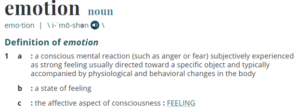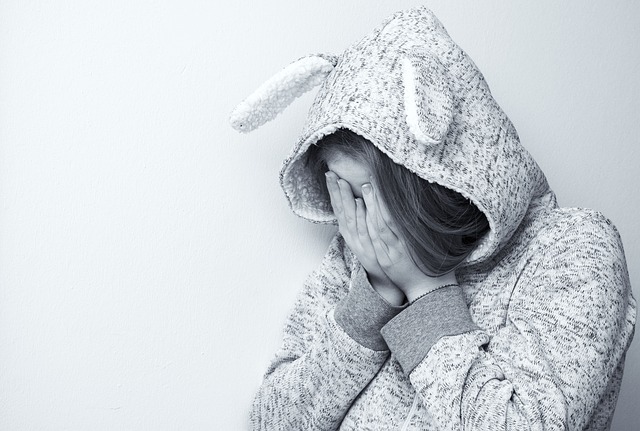You are tired of your overwhelming anxiety.
Or you can’t get rid of your anger and this inability is keeping you down.
Maybe it’s your crucifying depression which is your biggest enemy.
You hate your feelings and continued negative mood. And want to leave this phase of chaos and struggles.
Wouldn’t it be bliss if these negative emotions just evaporate into nothingness?
After all what life lessons would these emotions give you? What purpose do they serve?
And all which is left behind are joyful emotions of love and happiness.
Then you reassess your thoughts and remind yourself that these emotions have helped you in many ways in the past.
It was fear of failure that prompted you to study for the exam.
It was anger on irregular water supply in your building that prompted you to ask for the change in plumbing.
And then sadness made you explore new possibilities in life and develop your unique identity.
Stills, the questions remains: these emotions were better off working on life improvements. They should not have become a whole new phase of life and an end to our means.
We want them occasionally. They just cannot remain stuck with us for the whole life.
I understand.
These emotions are tricky. And their trickiness makes emotional awareness one of the most sought after skill in today’s world.
Let’s see the why behind persistence of these emotions. But before that, let’s analyze the origin of these emotions and mental states based on them.
What Are Emotions?
If we search this word in Merriam Webster, we find the following three definitions:
First meaning presents emotions as reactive mental forces. This definition points to the most profound benefit of such feelings – their ability to move us in right direction, towards success, away from failure.
The second definition gives the arousal we get from our feelings. Emotions are a state of arousal. This state, when it is short-lived, allows our cognition to wear different masks and enlighten us with varying viewpoints. Result is better goal-oriented decisions.
The third definition points towards the bodily changes we feel during unbalanced emotions. For example, when the supply of anger increases in our body, we feel tense; increased supply of neurotransmitter chemical, catecolamines, results in expansion of energy; and your attention narrows to focus on target of anger.
This is the second definition of emotion that prompts our bodies to experience physiological arousal, or emotions’ third definition. And this is physiological arousal that allows us to move forward and take directed actions (first definition).
In short, the goal of every emotion is to set us in motion. This motion can appear in the form of activation of sympathetic nervous system or our behavior can be one form of action from these emotions.
Emotion is Energy in motion.
And it is a good energy as long as it is short-lived. The problem arises when these emotions become our default states of mind.
If emotions, such as happiness, joy, anger, fear, or sadness become a normal part of our mental composition, our bodily functions will wear down because of excessive motion, excessive activity.
This is where the problem starts and we start hating our emotions.
But fear not we have a solution for this longevity of feelings also. Continue reading to find out how learning life lessons from these emotions help you.
1. Lesson from Sadness

Sadness is the emotion that takes responsibility of depression we feel.
Sadness is a cluster emotion that can present different levels of grieve and loss. The lowest grieve that we feel in this emotion is that of loss of self (or we call it guilt or shame).
People who suffer from prolonged sadness, depression, often complain about bouts of numbness. This numbness feels better than guilt on oneself still it keeps us stuck in lack of productive action.
A higher level of depression is when it comes from outside: grieve on loss of relation or physical matter.
If we look at these emotions and the reasons for creating them, we find that there is nothing positive about them. These causes and effects both are our enemies.
This belief is far from true.
We must learn one of the biggest life lessons when connecting with our emotions: all emotions are born out of love. If there is nothing wrong in the appearance of the motion, just focus on the love which gave birth to it.
Let’s see the love that took the shape of sadness.
You made a mistake and your love for yourself or for universe (whoever was target of the mistake) made you feel sorry for making the mistake. With every passing mistake, your feelings of guilt, shame, and apathy accumulated. And formed a part of your personality.
The problem didn’t lie in the feeling. It also wasn’t part of making mistake or repeating it. It lies in how you are dealing with the feeling.
If you stop fighting against it and pay attention you will listen to its true message. It wants to remind you that you are worthy of taking the right decisions.
It comes to validate your ability and your self-control, so you remember your potential act in your best interest.
Sadness’ contribution to our life lessons comes from this validation.
Lesson # 1 We need to start trusting our guts. We have to start taking our conscience seriously. We have to start saying yes to ourselves.
When you listen to this feeling, and thank it, it goes away.
If you go with your original choice without saying yes to your self-love, it remains and grows strong.
You can transmute this emotional phase if you acknowledge its presence and love for you and thank it. There is nothing much it wants. (But your acknowledgment should be as profound as the fully-grown feelings that resided within you.)
Grieve is another emotion included in the emotion of sadness. This part wants to tell us to feel our connection with our lost love. Once we have acknowledged the connection and how we were loved because of it, we get over it.
2. Lesson from Fear

Anxiety is the most common illness related to the emotion of fear.
This emotion is one of two primary emotions we associate with our innate need for protection and survival. It should be basic emotion to help us deal with danger through fight or flight.
The problem arises when this feeling starts interfering with our normal routine.
If anxiety is your way of dealing with life, it’s because you are suppressing your fears.
Lesson # 2: Its contribution to life lessons is the unique insight it gives us to its reason of origin. The reason is protection of you, your physical body, your emotional and spiritual health.
Ask your fear from which danger it wants, or wanted, you to protect. If the danger still persists (actually) tell take advice and work to protect or manage the danger.
If the danger has become a memory, all its wants from you is acknowledgment for their desire to protect you, appreciation of this act, and a permission to transform into their original shape which is love.
3. Lesson from Anger

This protective emotion which can appear in the shape of various personality disorders wants to add to your bucket of life lessons.
Lesson # 3: It wants you to acknowledge the fact that you have fallen for some worldly traps. It wants to point out some mistakes you have committed against you and some which others have committed.
It wants you to act and change your condition for the better.
Being one of the two most action-oriented emotions, this emotion will add destruction if you don’t take it with opposing doses of relaxation and peace.
What you can do to deal with it?
Let’s come back to the life lessons we are gathering from emotions.
After getting acknowledgment, it gifts us with the life lesson of thinking out of the box.
When anger asks you to break the hell out of jammed door, it is actually telling you that this is the shortest, most destructive action. Use it for immediate gains. It tells you the quickest ways.
In danger, use this emotion to deal with the imminent doom.
In more peaceful situations, use to inventory all the possible solutions which this emotion is throwing your way.
Tell it you know it want you to act. And also tell it that the best action is to think through the situation in most cases of anger.
Acknowledge and ask it to revert to its original shape of love.
4. Lesson from love

This is the mother of all rousing emotions we feel in our body. This is the purest form.
The lesson from this emotion is simple: whenever an emotion arises in your body or cognition, connect it back to the emotion of love.
Analyze that emotion with love and assess the reason of that emotion.
Acknowledge and move in the direction of self-love.
5. Lesson from Joy

Joy is another easy emotion. Its purpose is to open our minds to endless possibilities available in the universe.
It enriches us with creativity and curiosity.
Coming back to life lessons, we learn that joy teaches us perseverance. It gets you in a beginner mode where you become the scientist with highest intellect. You test, fail, learn but persevere.
Important Note
We all want us to remain with our love and joy states of mind. This love of these emotions makes us often forget that love can have many faces. All these faces have importance in our live. They support us to navigate through this adventure.
They allow us to learn new life lessons from our experiences.
The feelings they give us can be uneasy and detested at times. But this unease does not decrease the fruitfulness that is attached to them.
They are in our body for a reason. And the more we flee from them, the more disguised they will become.
(Disguised because they are disguises of pure emotion of love).
Once we recognize the true face behind masks of these so-called negative emotions the original emotion, love, will shriek with joy and come to us with open arms.
Bonus Emotion: Bonus Life Lesson
We discussed all the emotions which help us navigate through life. But don’t you think this list is incomplete?
What about the emotion of gratitude?
This emotion is not arousing emotion. It doesn’t set us in motion towards achieving a goal or running away from danger. It also doesn’t trigger our sympathetic nervous system.
It’s weird and opposing ways often prevent us from categorizing it as a moving cognitive force of emotion at all.
But if we look closely, this emotion also moves us. It moves us towards harmony, towards peace, and rest.
It allows us to re-generate our cognitive muscles.
Short bouts of emotions embedded within an unending phase of gratitude is what an ideal life would entail.
Unfortunately, the benign nature of this emotion often makes us forget that after indulging rousing emotions, in we have to return to our resting emotion.
This is the biggest among all life lessons: to return to our survival emotion, to return to gratitude.


